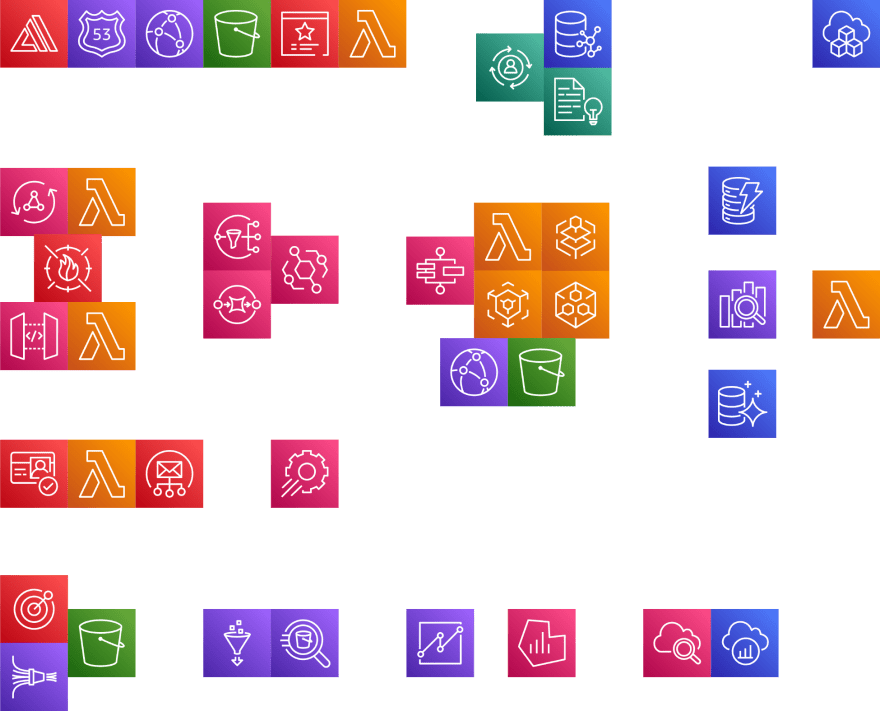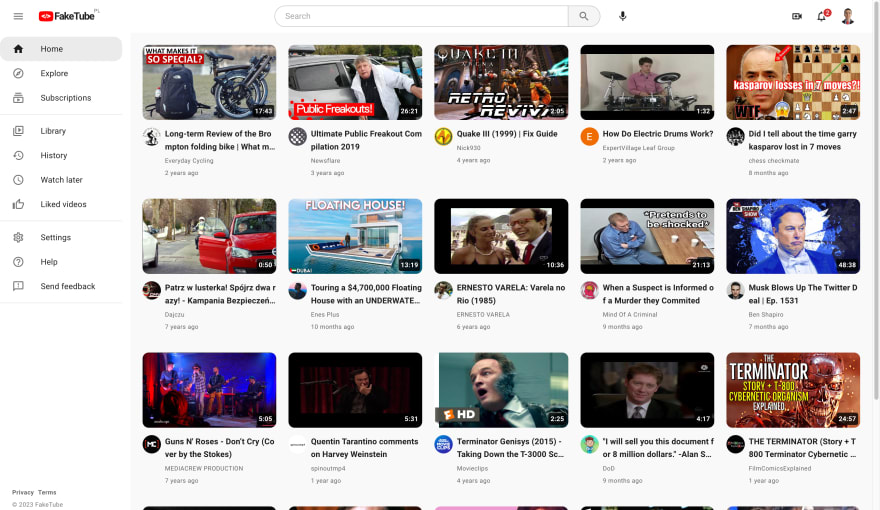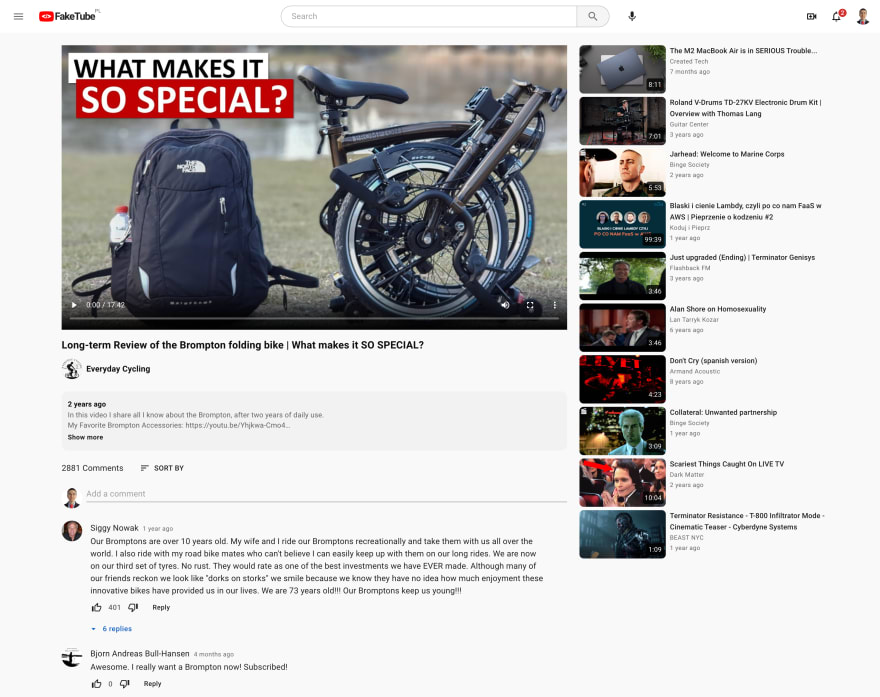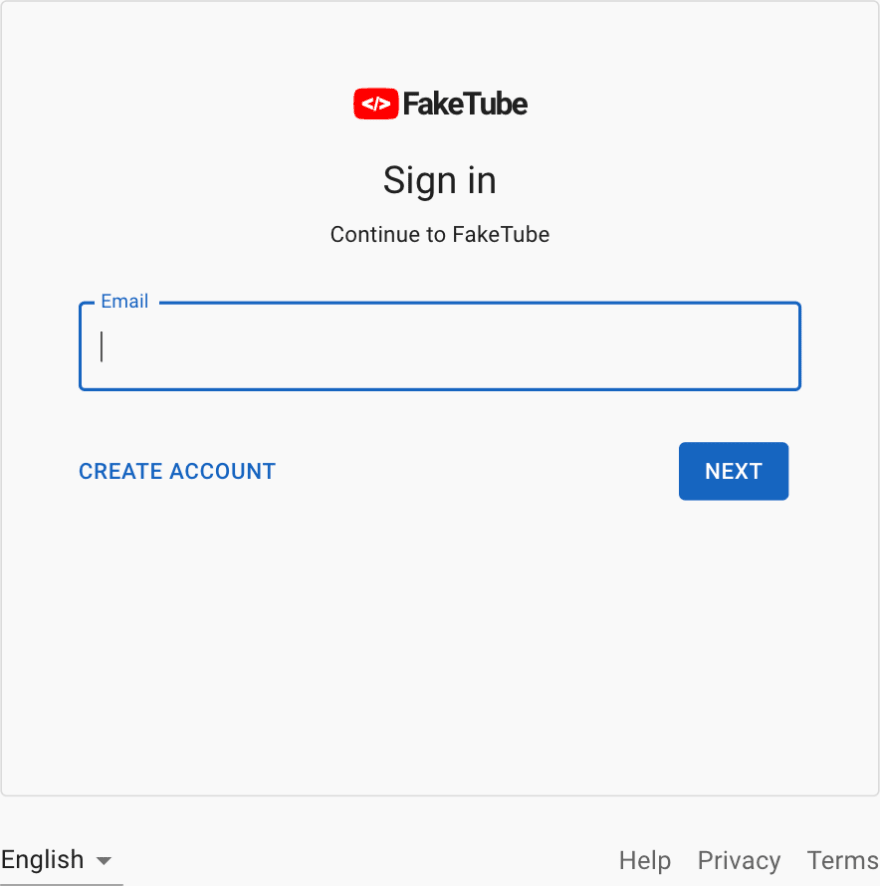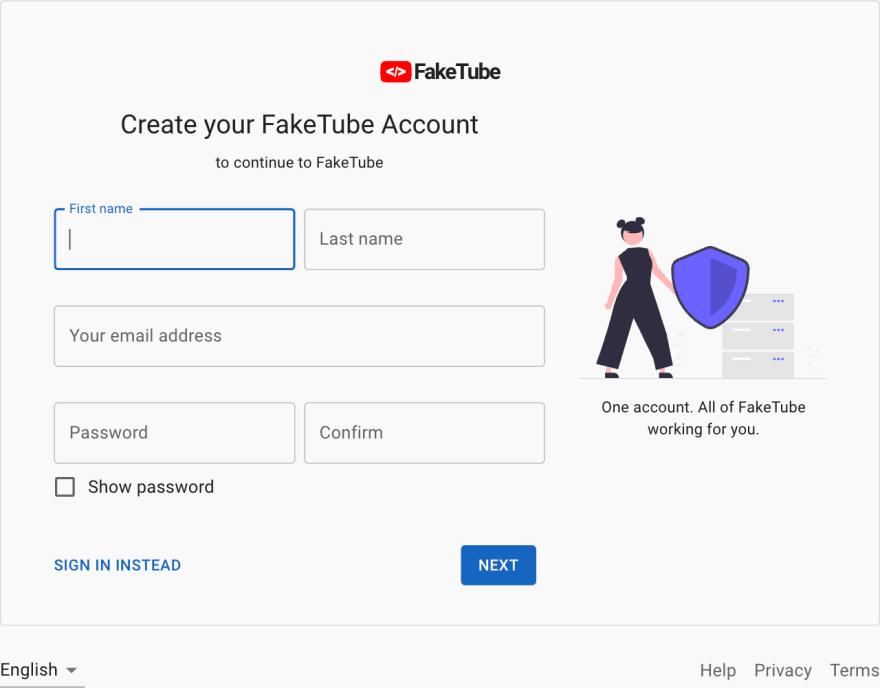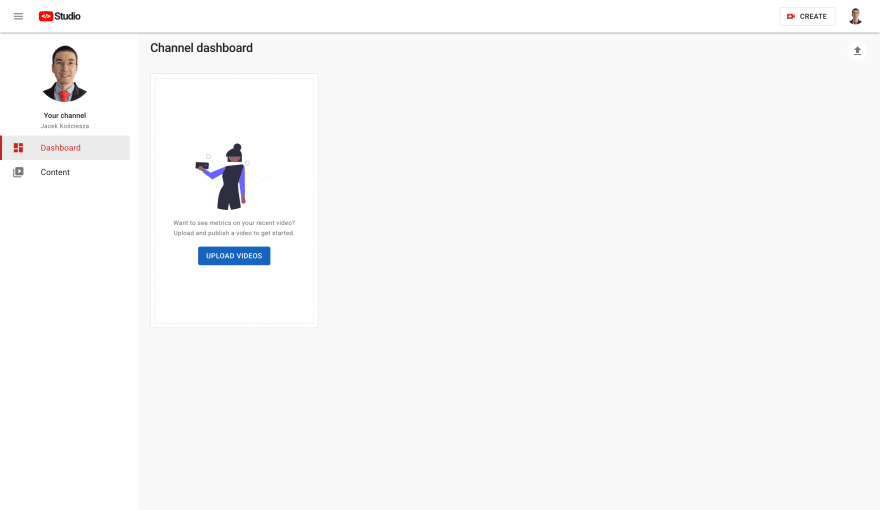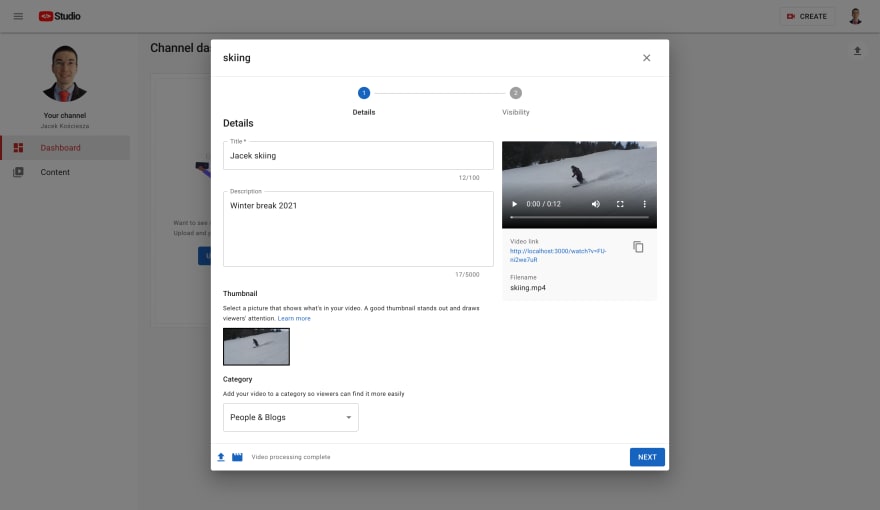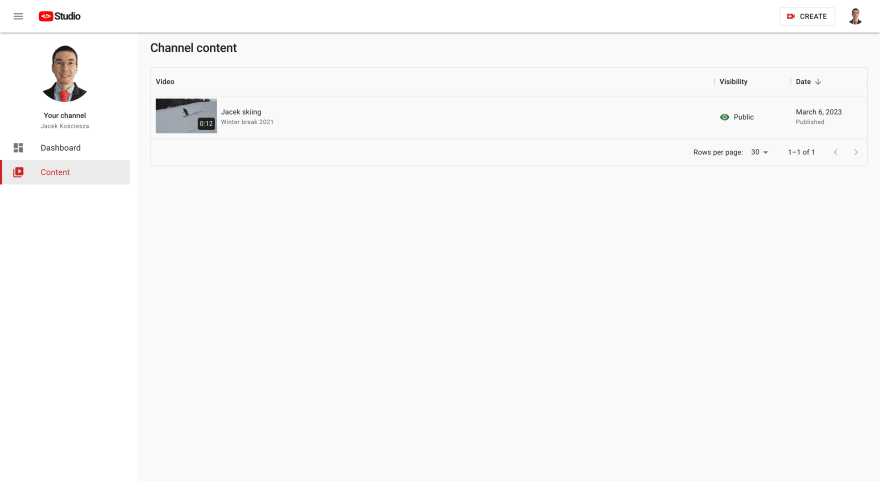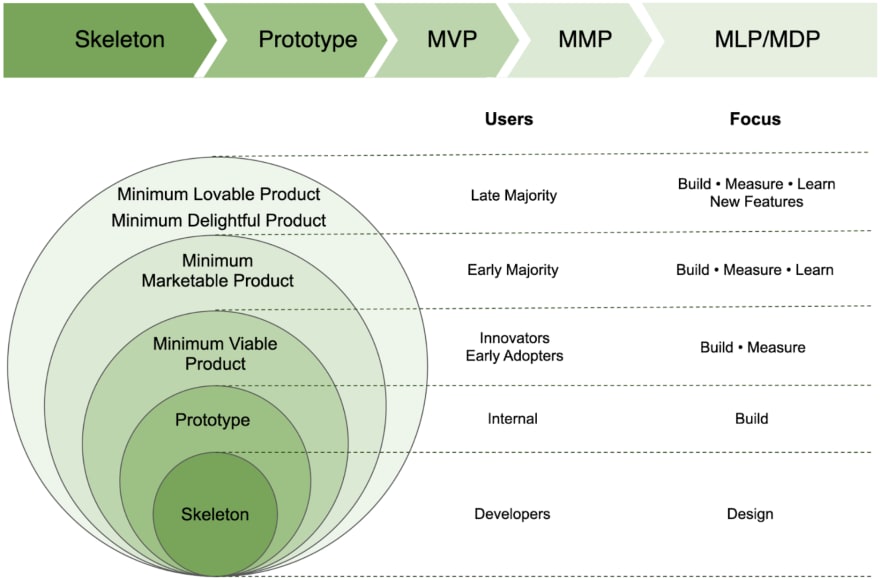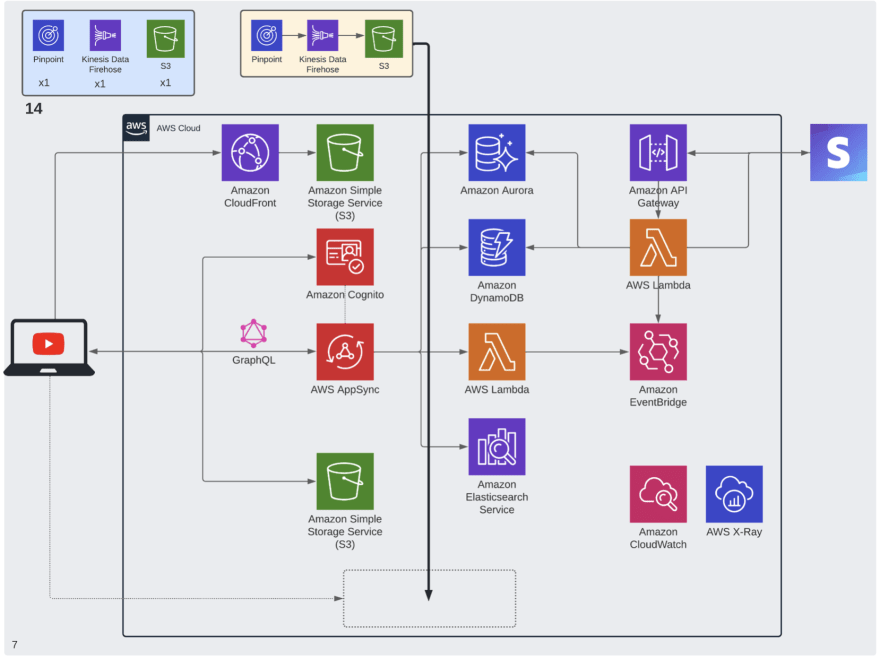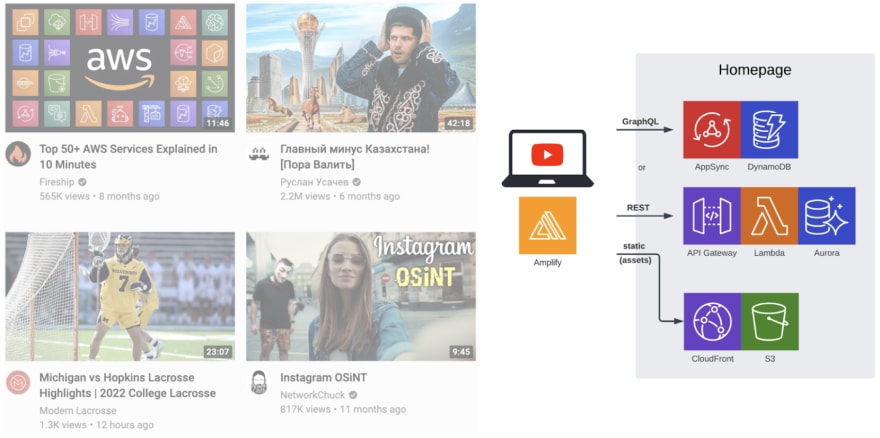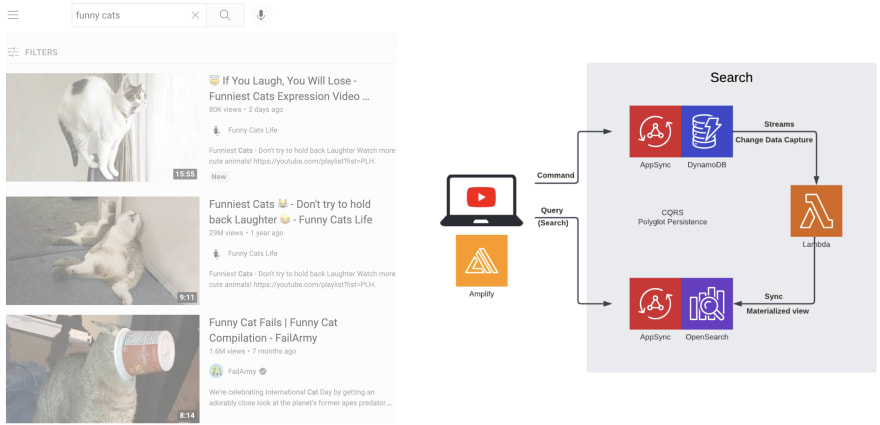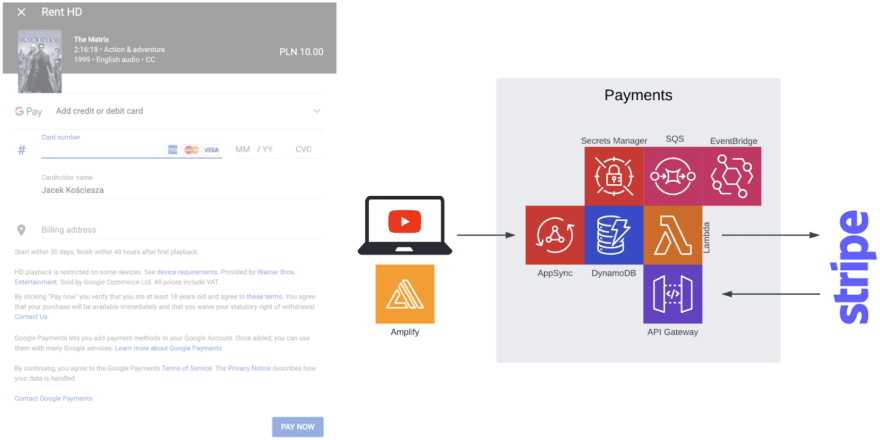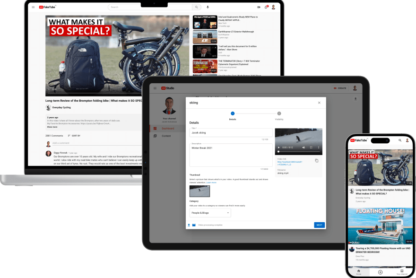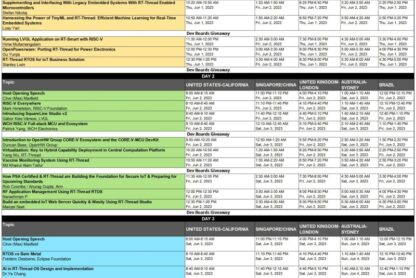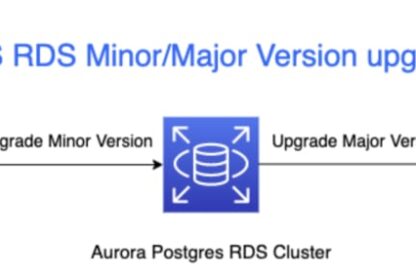I’m a builder. For over a year I’ve been building a project which is a YouTube clone called FakeTube.
Fig. 1. FakeTube – Responsive / Adaptive Web Design
I spent a lot of time researching and applying the best practices in software engineering, starting from DDD (Domain Driven Design) analysis, clear requirements (including UX/UI design and Gherkin style acceptance criteria).
On the frontend side – RWD/AWS (Responsive/Adaptive Web Design), building a components library with atomic design or effective state management.
DevOps aspects like advanced CI/CD pipelines (including all sorts of automated tests) and IaC (Infrastructure as Code).
Finally cloud-native, event-driven and microservices approach with some advanced serverless architecture on AWS, which look like this:
Fig. 2. Architecture Overview – over 30 different AWS service used
There are over 30 different AWS services used. I will go into details – what are those services and how they are interconnected, so stay tuned for that, but first let me show you how the app looks and what features I’ve implemented.
Demo
FakeTube is a web application which has a lot of features from the main YouTube app, as well as from the YouTube Studio.
Responsive / Adaptive Web Design
It’s fully Responsive and Adaptive Web Design, which means that it renders well on many devices. Some components are different on mobile and desktop resolutions. You can see that the main menu is changing from a bottom navigation bar on mobile, through a mini drawer on tablet, to a fully opened drawer on desktop.
Fig. 3. Mobile – bottom navigation bar
Fig. 5. Desktop – fully opened drawer
Appearance and language
There is quite an extensive Settings / Account menu, where we can adjust different things. This includes appearance, where we can switch between light and dark themes. Internationalization (i18n) and localization are another important aspect. At the moment you can switch between English and Polish languages, but it’s easy to add more, including right-to-left ones. Here you can see the home page with a dark theme in and a Polish language selected.
Fig. 6. Dark theme and Polish language
Watch page
Watch page is probably the most important place, where as a viewer you can actually watch the video or engage, connect with the creator. A lot of features like video player, metadata (with title, channel or owner info and description), watch next sections (with related, recommended videos) or comments are already implemented. I’m actively working on some other features like subscriptions, like/dislike or save (to playlist).
Fig. 7. Watch page – player, metadata, comments and related videos
Accounts
Many features on YouTube (and FakeTube) such as adding comments or uploading videos are available only for signed in users. That’s why I need to implement account creation, sign up or forgot password features early on.
Studio
Upload video
One of the coolest features I implemented is that you can actually upload your videos. It’s part of the FakeTube Studio and a lot is going on under the hood. Video file is uploaded to the object store. This triggers an event which kicks off the video transcoding process, which converts original video into suitable Video On Demand formats and sizes and generates thumbnails. Our web application is notified in real-time about video upload and processing progress.
You can add video metadata like title, description and category. It will be automatically saved as a draft, but you can set visibility to private, unlisted or just publish. It will be immediately visible in the Content section of the Studio and available to watch on FakeTube.
Fig. 12. Upload videos – select files
Fig. 13. Upload videos – details
Fig. 14. Upload videos – visibility
Fig. 16. Watch – uploaded and published video
As you can see I put a lot of effort into this project. I’ve learned a lot and that’s why I decided to share this knowledge, but also discuss some potential improvements with you. We will build together what you see here and even go beyond. There are many more features to build and ideas to verify. This tutorial will have many episodes and seasons. Let’s take this journey together.
Why, How, What
I bet that many of you know “Simon Sinek” and his great book “Start with Why”. I broke the rules and started with “What” we are going to build. Let me fix it now. I will explain:
- Why YouTube?
- Why AWS?
- How we will use AWS to build such a complex application
Learning
There is no end to education. It is not that you read a book, pass an examination, and finish with education. The whole of life, from the moment you are born to the moment you die, is a process of learning.
~Jiddu Krishnamurti
This quote couldn’t be more true in the field of software engineering. What is the best way of learning? Theory is a foundation, but real understanding and experience comes for practice. So how can you learn “by doing” effectively?
We can start with “Hello World!” example, but that is good for like 5 minutes. There are tutorials and this is really a good way of getting hands-on experience with a given technology, but you have to be careful. Don’t believe that you will learn AWS (end to end) in 3 hours or even over the weekend. Finally we can build another TODO app.
All those ways are useful, but there is a problem…
It’s like with this anecdote “How to draw a horse” (in 5 simple steps). Just draw 2 circles (or actually ellipses), draw a few lines as legs, face, hair…
Fig. 17. How to draw a horse – steps 1-4 of 5
…and the last step – add a few small details. “Taaaaaa-daaaaaa” here it is, beautiful horse:
Fig. 18. How to draw a horse – steps 1-4 of 5
And then you are starting to think how the heck should I go from step 4) to 5)? This reminds me of the difference between simple tutorials and real life commercial projects like Twitter, Reddit – you name it.
Depending on which stage of the project we get to – we will have different challenges. In the early stages of the project you can choose technology, design architecture, but probably it’s not the right time to build multi-site disaster recovery. On the other hand, in mature projects things like analytics, A/B split testing will be important, but some decisions are already made and you don’t have much influence on them. It would be great to go through all those stages, but only few of us have that opportunity.
Fig. 19. Skeleton vs Prototype vs MVP vs MMP vs MLP/MDP
So, what can you do – create this opportunity yourself. With your own long-term project you can do whatever you want. Go through all those stages, experiment, make mistakes, change your mind, learn a lot along the way.
YouTube
The subject of the project must be thought through very carefully. Why do I think that building a YouTube (clone) is a good idea? I can see three main reasons for this:
Business domain
First thing is the business domain. The application is well known to everyone and it’s pretty simple to understand, at least on the high-level, how the YouTube ecosystem works. Here’s quick summary form a book “The YouTube Formula” by Derral Eves:
…creators make videos and upload them to YouTube. Brands pay YouTube to run advertising alongside uploaded content, either before or during a video. When a channel meets the ad sharing program requirements, it gets a cut of the money from the ads running on their content.
We want to focus on software engineering, not on creating new innovative business, so this is perfect – we have a ready plan for what we will build.
Backlog
Second (related) thing is that we have almost a ready backlog of things to implement. Of course we have to discover some not obvious features, make some DDD (Domain Driven Design) analysis, maybe an EventStorming session, but we don’t have to do it from scratch. We have an existing app, so we can check how it works. There is an official “How YouTube works” website, there are books, videos about the topic. We also have ready UX/UI design, what’s more – it’s based on Material Design, so we can use one of the existing component libraries and focus on composing more complicated UI elements and layouts.
Challenges
Last thing is challenges. This model of how YouTube works is simple, but it results in many complicated challenges to overcome.
YouTube wants users to spend time in the app and watch as many interesting videos for them as possible, because it means more ads, therefore profits. This means that the recommendation system becomes a crucial part of the solution. We can start to implement something simple e.g. based on tags and then improve it using graph databases or Machine Learning models.
All sorts of analytics also become super important. It’s not only about analytics for creators inside YouTube Studio. All those events like impressions, clicks, watchtime, likes/dislikes, survey responses, comments are also signals for the recommendation system.
Statistics related to YouTube are astonishing. They have more than 2.6 billion users and there is 500 hours of content uploaded to YouTube every minute. As Marques Brownlee put it “…if there’s a problem that’s so small it only affects 0.1% of people on YouTube, that problem now affects 2.6 million people.”
As Eric Schmidt said “Every problem they have is a problem at scale”. We can also think from the engineering perspective how we can design our solution to be so scalable.
There are many more things under the hood, things which we don’t see in the UX/UI, but are key aspects of the YouTube ecosystem.
AWS
Choosing a cloud provider for your project is not a trivial task. You can take dozens of factors into account. I wanted to focus on major players on the market, because I wanted mature, well tested solutions with large communities. The three biggest players on the market are:
- AWS (Amazon Web Services) with over 30% of the market share
- Microsoft Azure with over 20%
- GCP (Google Cloud Platform) with around 10%
Google Cloud Platform seems like a reasonable choice for FakeTube – YouTube is part of Google, so it probably works on GCP, right? It’s not so simple. In 2021 Thomas Kurian, CEO of GCP announced that Google will migrate part of YouTube’s infrastructure to Google Cloud. Turns out that YouTube is/was hosted on internal infrastructure separate from GCP. So unfortunately that’s not as simple as “let’s use the same services which real YouTube is using”.
After doing some research, I found that AWS and Azure offerings seem more complete and mature. This conclusion can also be made when you look at “Gartner® Magic Quadrant™ for Cloud Infrastructure and Platform Services”.
Fig. 20. Gartner – Magic Quadrant for Cloud Infrastructure and Platform Services 2022
So AWS or Azure? Frankly speaking I think that both of them would work well, but a few things convinced me to AWS.
I really like the serverless-first approach. It seems that AWS has the most mature and complete offering of serverless services. There are serverless services in all categories – compute, data store, application integration and even analytics. AFAIK AWS is still the only cloud provider which offers serverless GraphQL service (called AppSync).
Infrastructure as Code was another good practice I wanted to use. AWS has a great, native solution for that called AWS CDK (Cloud Development Kit), where you can use programming languages you know to define cloud infrastructure.
Great offer of more than 15 purpose-built databases, which allows me to use polyglot persistence was also a plus.
This project is a VOD (Video on Demand) solution, so super important for me was the offering of media services called AWS Elemental (Azure also has similar services).
LEGO
Fig. 21. LEGO – Star Wars Millennium Falcon – Assembled
This is the LEGO Star Wars Millennium Falcon, a mega big set, which has over 75 000 pieces and when assembled it’s 84 cm long and 60 cm wide.
Fig. 22. LEGO – Star Wars Millennium Falcon – Pieces
Such a big number of elements is overwhelming. Fortunately, there are always instructions included with LEGO sets, which guides you step-by-step how to create another increment. You find a few pieces, connect them together and put them in the right place. Imagine how hard it would be to assemble this set without an instruction.
What does this have to do with AWS and building software? AWS services are similar to LEGO bricks, you need to find the right ones, connect them together and put them in the right place in the architecture to build an app. There are also similar problems – the number of services is overwhelming – there are more than 200 of them.
Now imagine that you have to build an app in AWS without an instruction. Luckily I have one, so let’s see which services we can use and how to compose them to deliver FakeTube features.
Hosting
This project is a web application, so we have to host it somewhere. Service which is perfect for this is Amplify. Under the hood there are a lot of other services which you can use directly if you need more control, but Amplify simplifies this a lot. Those services include Route 53 which is DNS (Domain Name System) in the cloud, you can for example register and configure your own domain. Certificate Manager can be used to manage SSL/TLS certificates to enable HTTPS communication. CloudFront is a CDN (Content Delivery Network) which allows you to deliver app assets, images, and videos faster. S3 (Simple Storage Service) is an object store where we upload and keep all those assets. There is also Lambda@Edge, which is FaaS (Function as a Service) on the CDN level (it’s part of CloudFront). It allows you for example to use SSR (Server Side Rendering) with a framework like Next.js.
Homepage
The YouTube homepage is mainly a list of recommended videos. In a simplest solution, without personalized recommendations, we will need some kind of API and database where we will keep a list of videos. There are at least two ways of doing it.
We can go with a more traditional approach with a RESTful API and relational database. API Gateway will be perfect to build this kind of API. When it comes to databases, there are a number of different services in RDS (Relational Database Service). I would recommend a serverless version of Aurora with a Postgres compatible engine. We will also need to run some code, so Lambda will be a good fit.
Second approach, which is the modern one, would be to use GraphQL and noSQL database. For the API we can use AppSync, which is a kind of GraphQL gateway, which has direct integration with many other AWS services, including DynamoDB, which is a key-value database. This means that we don’t need additional code which runs on Lambda, but in practice it’s sometimes simpler to use one, instead of doing complicated things in VTL (Velocity Template Language) templates.
We will keep static assets in S3 (Simple Storage Service) and deliver them using CloudFront.
Authentication
You have to be signed in user to use some of the YouTube features. Examples would be adding a comment or uploading a video. Cognito can help us with that. It’s an identity and access management service which we can use to authenticate users and create accounts. Integration is very simple with Amplify library, it’s only one function call to sign in a user. SES (Simple Email Service) allows us to send confirmation emails. We can keep templates of those emails in S3 (Simple Storage Service) and use Lambda function to prepare content of this email based on the template and needed data.
Upload
The real fun starts when we upload videos. In a simplest version we can upload a file to S3 (Simple Storage Service). This will trigger Lambda function, which will run a job in Elemental MediaConvert to transcode original video into suitable VOD (Video On Demand) formats and sizes and generate thumbnails. Those assets are uploaded back to S3 and we use CloudFront to efficiently deliver them. We can track progress of the transcoding process using CloudWatch and even send notifications using SNS (Simple Notification Service) and Lambda.
In practice this workflow can be even more complicated and enhanced.
In Fig. 29 we can see Glacier which can be used to archive original video files in a cost-effective way. Step Functions will provide a state machine, which will orchestrate the whole workflow in a reliable way, for example by providing retries if needed. We also have an Elemental MediaPackage, which will prepare video content for a broad range of connected devices.
There are even more Elemental services such as MedaTaylor which can insert personalized ads to video, which is essential in the YouTube ecosystem.
Recommendations
Another key feature is “Watch next” and its video recommendations. We will need an API for that for example GraphQL based solution in AppSync. We will keep a list of videos in DynamoDB, but we need a way to deliver related and personalized video recommendations. One option is to use a graph database called Neptune and Gremlin query language. A Simple use case would be like this: I like video “A” and “B”, other user likes video “B”, so let’s recommend video “A” for him, maybe he will enjoy it as I did. It’s pretty simple to write queries like that using graph databases. Another possibility is to use Personalize, ML (Machine Learning) based service created exactly for this purpose – personalized recommendations. It’s used by Amazon.com, so you can imagine how powerful it is.
Search
Search is an important feature of many apps. YouTube is no different. As previously we keep a list of videos in DynamoDB, but for search there are better, specialized solutions such as Elaticsearch. In AWS there is OpenSearch which is derived from Elasticsearch and even more powerful. This is an example of polyglot persistence, where we use multiple data storage services in a single solution, depending on the use case. This is also an example of CQRS (Command Query Responsibility Segregation) – we use different technologies for commands (e.g. create, update, delete video) and queries (e.g. search). Interesting problem is how can we synchronize data between DynamoDB and OpenSearch, how can we create materialized views in OpenSearch. Luckily DynamoDB supports streams, which are a time-ordered sequence of modifications, which we can process using Lambda and modify the OpenSearch index appropriately.
Comments
Comments are not very complicated in their basic form. As always we need an API for example using GraphQL based AppSync. We can keep comments in DynamoDB, but we will need two indexes for sorting comments by date (“Newest first” option) or by relevance (“Top comments” option). Comments can give us useful analytical data and become a signal for recommendations. Number of comments for the given video is important, but we can also check sentiment (negative or positive comment). For that purpose we can use Comprehend, which is an NLP (Natural-Language Processing) service.
Analytics
Analytics is important not only for creators in Studio, but to make the whole YouTube ecosystem work efficiently. There are a few options here. We can use Kinesis Data Firehose directly and store all the events from the web app directly in S3 (Simple Storage Service). S3 will be used as a Data Lake in this scenario. We can also send events directly to Pinpoint, which is an engagement and communication service. In that use case it’s also possible to upload this stream of events from Pinpoint to S3 using Kinesis Data Firehose. Next we can query S3 using SQL thanks to Athena and visualize interesting things in QuickSight, which is a BI (Business Intelligence) tool.
Payments
Renting or buying a movie is a less known feature in YouTube. Implementing this feature can be however a great opportunity to practice integration with some 3rd party services e.g. payment processing service like Stripe. In addition to the standard service we already used, we can use SQS (Simple Queue Service) to provide better scalability and decoupling. Very useful can be EventBridge, which is a kind of event bus, which can be used for internal communication between microservices, as well as for external integrations. Things like API keys can be stored in Secrets Manager in a secure way.
Just a start
As you can see possibilities are almost endless and this is just the tip of the iceberg. We didn’t discuss security topics like WAF (Web Application Firewall) or Shield service, which can protect us from DDoS (Distributed Denial of Service) attacks. We can try different Disaster Recovery solutions including the most advanced Multi-Site Active/Active option. There are more advanced, scalable services related to analytics like Redshift which is a Data Warehouse solution. We can experiment with different versions of UX/UI and features with A/B, split testing thanks to CloudWatch Evidently. We will try all of this, so stay tuned.


